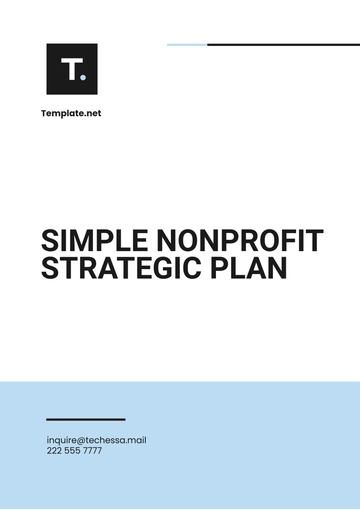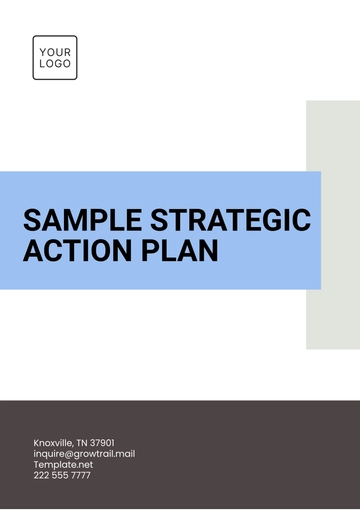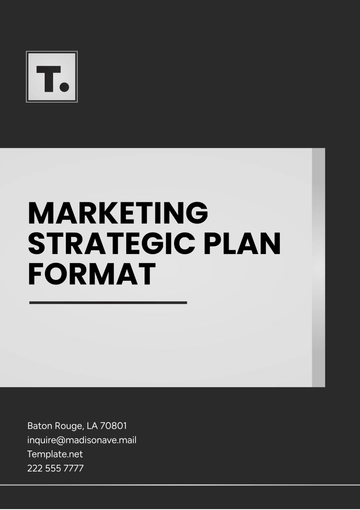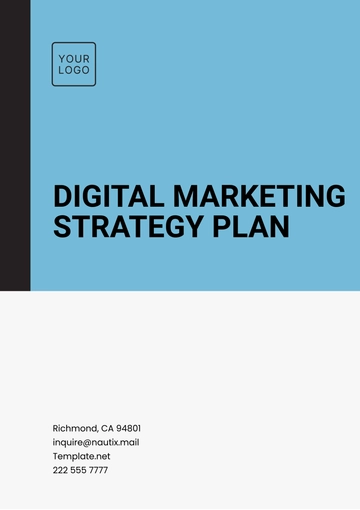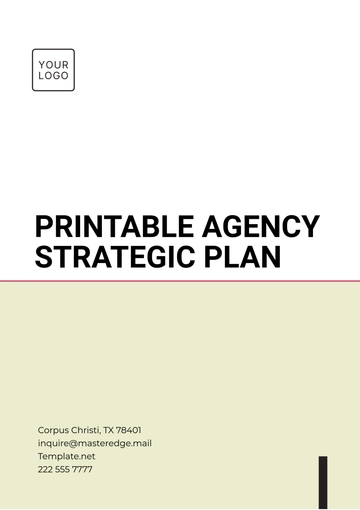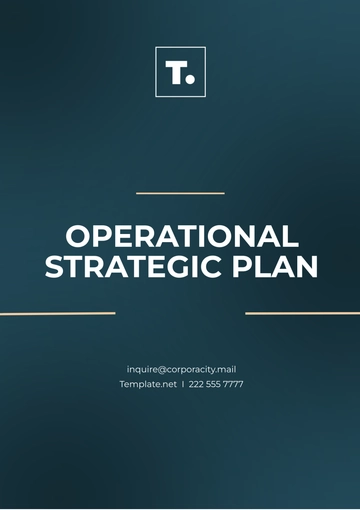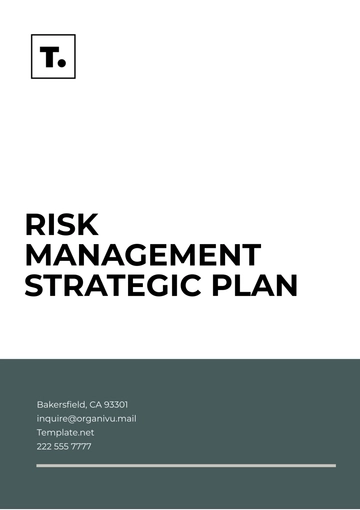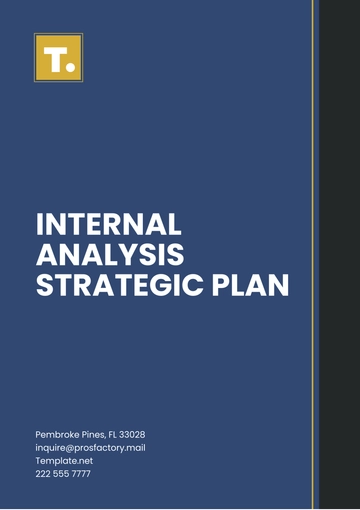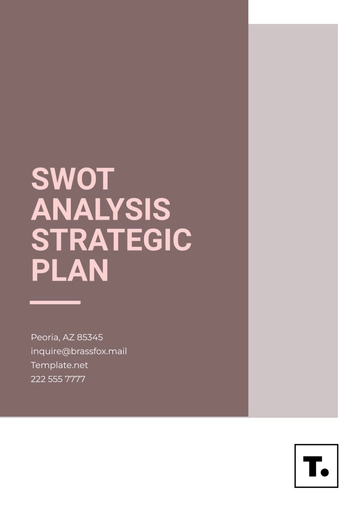Free Sales Strategic Plan for Expanding Analysis Scope
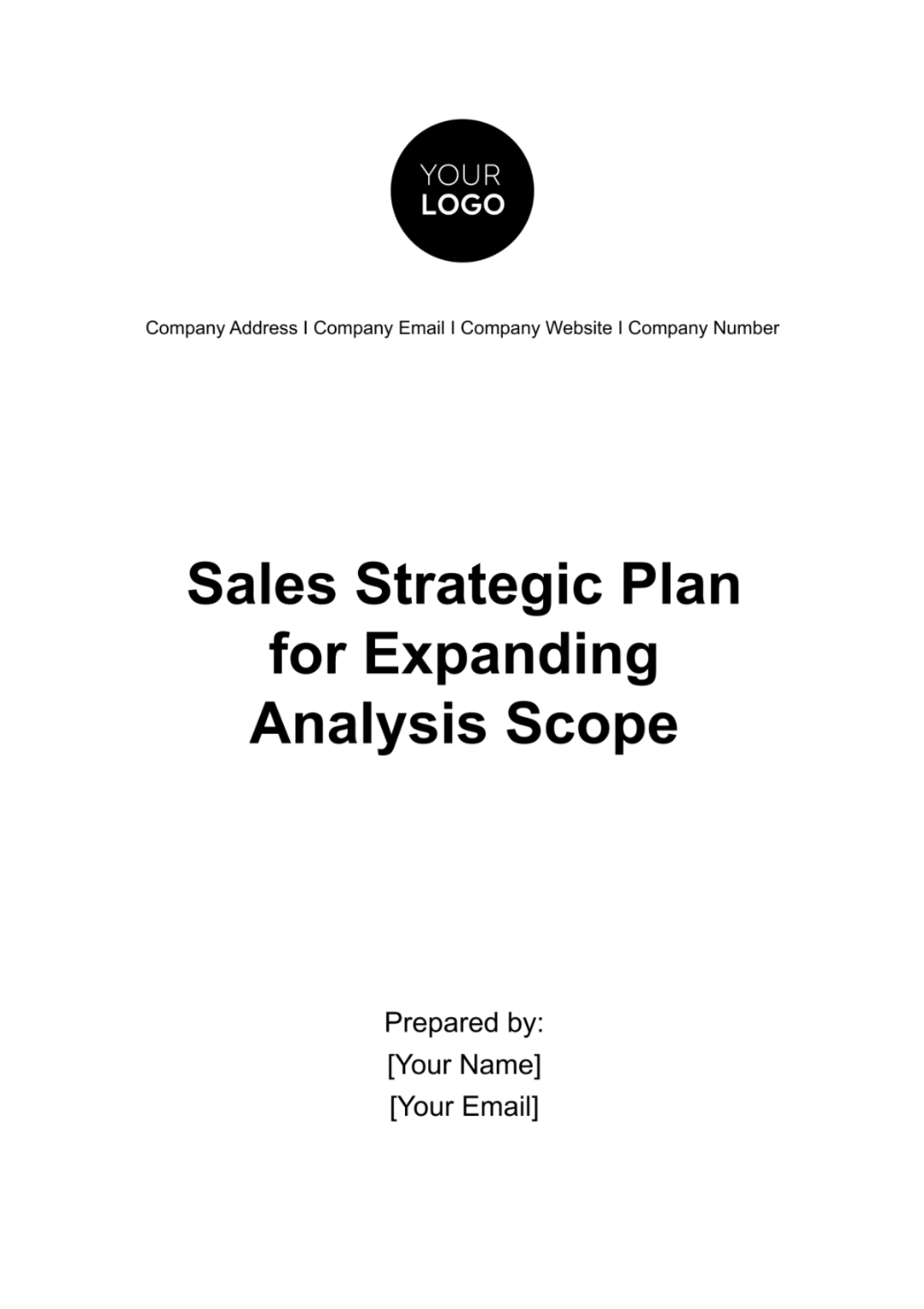
Analysis Scope
Executive Summary
In the dynamic and constantly evolving business landscape of the year [Year] and beyond, [Your Company Name] is acutely aware of the imperative to extend the horizons of its analytical capabilities. This Sales Strategic Plan stands as a testament to our commitment to innovation and foresight. It encapsulates our visionary approach, strategic objectives, the tactical avenues we shall traverse, and the meticulous allocation of resources necessary to fortify our position as a leader in our industry. Through the expansion of our analytical scope, we aspire not only to keep pace with shifting market dynamics but to proactively position ourselves at the vanguard of industry trends, solidifying our competitive advantage in an era defined by data-driven decisions.
This is not just a plan; it is a pledge to stake our claim in the landscape of the future, where data reigns supreme, and where [Your Company Name] shall be the architect of its destiny.
Introduction
[Your Company Name] has been a leader in [industry] for [number of years]. However, to maintain our position, we must adapt to changing market dynamics and customer preferences. Expanding our analysis scope beyond our current focus will provide us with a comprehensive understanding of the market and enable us to make data-driven decisions.
Current State of Analysis Scope
As of the year [Year], our analysis scope predominantly centers on comprehensive market data acquisition and customer behavior analysis within the North American region. While this approach has yielded commendable results, it's crucial to recognize its boundaries in the dynamic market environment of today. Our current analysis primarily entails:
Market Demographics Analysis: We collect and analyze demographic data, purchasing power, and consumer trends within North America.
Customer Segmentation: Our segmentation strategies help identify key customer profiles, allowing us to target them effectively.
Sales Performance Metrics: We track sales performance, focusing on revenue, conversion rates, and customer acquisition cost.
Competitor Benchmarking: Periodic assessments of our key competitors provide insights into our relative market position.
However, our existing analysis scope faces the following limitations:
Geographical Limitations: Our current focus is largely confined to North America, which leaves us vulnerable to missed opportunities in emerging markets elsewhere.
Limited Predictive Capabilities: Our predictive analytics are rudimentary, primarily used for demand forecasting rather than forecasting market disruptions.
Competitor Depth: We lack a dedicated team for in-depth competitor analysis, which limits our understanding of the competitive landscape.
Global Expansion Preparedness: Our readiness to enter new markets outside of North America has not been adequately assessed.
Recognizing these limitations, it is imperative for [Your Company Name] to broaden its horizons and leverage advanced analysis techniques to stay ahead of evolving market dynamics, minimize risks, and elevate our competitive edge in the years ahead.
Vision for [Year] and Beyond
At [Your Company Name], our vision for the period spanning [Year] and beyond is to set the gold standard as the foremost industry leader in data-driven decision-making. We aspire to broaden our analysis scope, encompassing the following key pillars:
Customer Behavior Analysis
We are committed to understanding our customers at a level of granularity previously unattained. This involves an in-depth exploration of their preferences, behaviors, and purchasing patterns. We will leverage cutting-edge data analytics to personalize our offerings and provide tailored experiences that drive customer loyalty and growth.
Market Trend Forecasting
To maintain our competitive edge in a rapidly evolving world, we are dedicating substantial resources to predictive analysis. Our aim is to forecast market trends and disruptions with remarkable accuracy. By employing advanced data analytics techniques, we anticipate that our predictions will shape our product development, marketing strategies, and operational decisions.
From 2050 to 2060, our market trend forecasting paints a dynamic picture. The global [industry] market starts strong with a 10% YoY growth. In 2051, sustainability takes the spotlight, driving a remarkable 15% sales increase. The following year, innovative technologies trigger a 20% market expansion. However, in 2053, regulatory changes cause a slight 5% revenue dip. Swift adaptation leads to a substantial 25% boost in e-commerce sales by 2054.
Ethical sourcing in 2055 creates a 10% demand surge. In 2056, market consolidation results in a 10% drop in competition. By 2058, rapid urbanization drives a remarkable 30% shift in sales channels. Technological advancements then reduce operational costs by 15% in 2059. In 2060, tailored regional strategies align with a 20% global purchasing power shift, demonstrating our commitment to agile market response.
Competitor Analysis
Understanding our competitors is integral to maintaining our competitive edge. By delving into their strategies, strengths, and weaknesses, we will be better equipped to refine our own tactics. We envision a dedicated team of experts who will continuously monitor and assess the competitive landscape, providing us with actionable insights to enhance our market positioning and strategy.
Global Expansion Readiness
To prepare for global expansion, we will meticulously evaluate potential markets and assess our readiness to venture into them. This process will involve market research, regulatory compliance assessments, and infrastructure evaluations. Our goal is to identify opportunities for growth beyond our current horizons and to ensure that we are well-prepared to seize them.
Market Analysis and Trends
To succeed in our vision, we must first analyze the market and anticipate trends in the [industry]. Here are some key insights that will guide our strategic expansion:
Emerging Markets
Our analysis reveals that emerging markets in the dynamic [region] hold significant growth potential. Countries such as [Country A], [Country B], and [Country C] are experiencing economic growth and increased consumer spending. By establishing a strong presence in these markets, we can tap into a burgeoning customer base and unlock new revenue streams.
Digital Transformation
As the [industry] stands on the cusp of a transformative digital era, we recognize the pivotal role of data analytics in maintaining our competitive edge. This digital revolution is marked by cutting-edge developments, including the Internet of Things (IoT), which will furnish a wealth of data to optimize operations and elevate customer experiences. Furthermore, Artificial Intelligence (AI) will empower us to automate processes, forecast customer preferences, and deliver personalized solutions. In addition, our embrace of blockchain technology will foster transparency and trust within the industry, unlocking fresh avenues for growth and operational efficiency. Our steadfast commitment to pioneering these technological advancements is our blueprint for ensuring our position as an industry leader.
Sustainability
Sustainability is no longer a buzzword but a fundamental concern for consumers and regulators alike. Businesses that align with eco-friendly practices are not only meeting societal expectations but also gaining a competitive advantage. Our analysis indicates:
Eco-Friendly Product Lines: Developing sustainable product lines and reducing our carbon footprint will appeal to environmentally conscious consumers.
Supply Chain Responsibility: Ensuring transparency and ethical practices throughout our supply chain will enhance our brand reputation.
Regulatory Compliance: Staying ahead of sustainability regulations will mitigate risks and open doors to markets with stringent environmental standards.
Strategic Goals and Objectives
In alignment with our vision and market analysis, our strategic goals for expanding analysis scope in [Year] and beyond include:
Increase Data Integration: Develop a unified data platform for integrating data from various sources.
Enhance Predictive Analytics: Implement advanced algorithms for predictive analysis.
Build a Competitive Intelligence Team: Create a specialized team for competitor analysis.
Global Market Assessment: Assess at least [X] potential new markets by [Year].
Strategies and Tactics
We will implement the following strategies and tactics to achieve our goals:
Invest in Technology: Allocate [X%] of our budget to acquire advanced analytics tools.
Training and Skill Development: Train our existing team and hire data analytics experts.
Partnerships: Collaborate with data providers and technology companies.
Global Scouting Teams: Deploy teams to assess potential new markets.
Resource Allocation
Effective resource allocation is crucial for the success of our expansion plan. We have earmarked a substantial budget of $3,000,000 to bolster our analysis capabilities, enabling us to navigate the ever-changing landscape. In addition, we are investing in our human resources by hiring 10 data analysts and 5 market analysts, a critical move to harness the power of data. Our commitment extends to technology with a $1,500,000 investment in advanced analytics tools, and $200,000 for continuous training and development, ensuring our team stays ahead of the curve.
Resource allocation is a critical component of our expansion plan, and the figures reveal a strategic distribution of resources to drive our success. With an allocation of $345,679 to Human Resources, we are ensuring that our team is well-equipped to handle the increased analysis scope. This investment in personnel will empower us to leverage data effectively. The lion's share of our allocation, a substantial $1,500,000, is earmarked for Technology, underlining our commitment to cutting-edge analytics tools and platforms. This substantial investment is a testament to our dedication to staying ahead in the data analytics game.
Additionally, with an allocation of $200,000 to Training, we are emphasizing the importance of continuous development for our workforce. This allocation demonstrates our commitment to ensuring our team remains well-trained and adaptable in the fast-evolving landscape of data analytics. In summary, this resource allocation plan aligns with our strategic goals, positioning us for success as we expand our analysis scope. The investments in human resources, technology, and training underscore our commitment to excellence in data analytics.
Monitoring and Evaluation
Our commitment to ensuring the success of this strategic plan is underpinned by a robust system of Key Performance Indicators (KPIs). These KPIs will serve as our compass, guiding us towards the desired outcomes. To begin with, we will closely monitor the Data Integration Rate, striving for an ambitious [X%] increase within the first year. This metric will gauge our efficiency in consolidating data from various sources, providing us with a holistic understanding of our operations and market landscape.
In addition, we will meticulously assess the Predictive Accuracy of our analytics models. The precision of our predictions will be pivotal in enhancing our decision-making process. By constantly refining our models, we aim to bolster our ability to foresee market trends and make data-driven choices with a high degree of certainty. Simultaneously, our commitment to remaining at the forefront of our industry extends to the continuous scrutiny of Competitor Insights. We will routinely evaluate the quality and relevance of these insights, ensuring that we remain ahead of the competition. Lastly, our plan includes setting ambitious targets for Global Market Expansion, a critical growth avenue. We will not only establish these targets but also evaluate our readiness to enter new markets, taking into account regulatory, cultural, and operational considerations to ensure a successful expansion.
- 100% Customizable, free editor
- Access 1 Million+ Templates, photo’s & graphics
- Download or share as a template
- Click and replace photos, graphics, text, backgrounds
- Resize, crop, AI write & more
- Access advanced editor
Elevate your sales strategy with Template.net's Sales Strategic Plan for Expanding Analysis Scope Template. Tailor your approach effortlessly with its editable and customizable features. Utilize our intuitive AI Editor Tool to refine your plan with precision. Stay ahead of the curve and optimize your expansion efforts seamlessly by using our template product!

